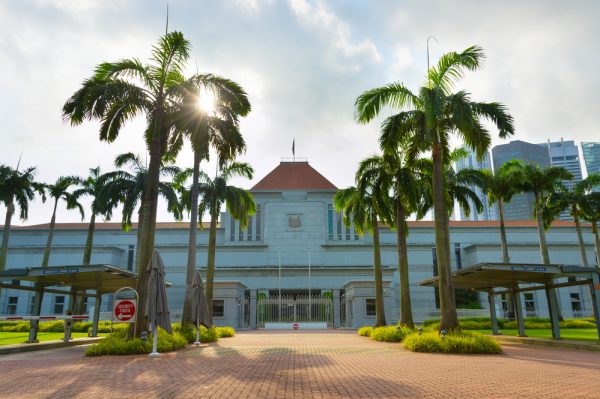
Singapore’s 2022 budget will go into effect on April 1, after being approved by President Halimah Yacob last week. As reported by the Straits Times, the budget blocks out SG$109 billion in spending for the fiscal year, and authorizes drawing on up to SG$6 billion in past reserves. The Singaporean government likes to run balanced budgets, and generally refrains from tapping accumulated reserves to pay for current spending. But the COVID-19 pandemic left them little choice. 2020 saw revenue decrease sharply while ramped up spending to keep the economy afloat and strengthen the healthcare system resulted in a fiscal deficit of over SG$51.6 billion.
The 2022 budget, as with the previous year, is sending the message that things are starting to get back to normal. Revenue bounced back in 2021 to over SG$80 billion and is projected to reach SG$81.8 billion in the upcoming fiscal year. In addition, Singapore’s state investment funds have been performing very well, contributing SG$20.3 billion to state coffers last year and a projected SG$21.5 billion in 2022. In fact, the government felt its fiscal position was sound enough that last year it took on some new liabilities via the Significant Infrastructure Government Loan Bill, which will be used to fund long-term infrastructure projects.
The effects of the pandemic are still being reflected in 2022 spending patterns, however. Looking at the 2022 Supply Act, which establishes spending limits for various ministries, the Ministry of Health will continue receiving a boost with SG$19.3 billion allocated in 2022, an increase of nearly 65 percent from 2019 levels. The Ministry of Manpower, one of the frontline ministries blunting the impact of the pandemic on workers and businesses, has been allocated SG$8.7 billion for 2022. This is a 441 percent increase from 2019 levels. Given some of these elevated expenditures, the total fiscal deficit for 2022 is being projected at around SG$3 billion, which is quite moderate but still noteworthy since the government prefers not to run any deficit at all.
To close the remaining fiscal gap moving forward, it appears the preferred tool is going to be increases in revenue rather than sharply slashing spending. The GST, a consumption tax, will increase from 7 to 8 percent on January 1, 2023 and then go up an additional percentage point the following year. When the full rate hike is in place, it is expected to generate an additional SG$3.5 billion in tax revenue.
Another tax likely to make an impact is the carbon tax, set to escalate dramatically by the end of the decade. Singapore’s current carbon tax is SG$5 per ton, but is set to increase to SG$25 in 2024 and somewhere in the area of SG$50-80 by 2030. The use of such market-based policy instruments to influence the behavior of consumers and businesses, while also drumming up big revenue streams, has a solid track record in Singapore.
The tiny island-nation used similar tools to create a competitive market for automobiles, which has kept traffic manageable while raising an estimated SG$5.6 billion from car taxes and vehicle quota premiums in 2021 alone. Bringing these same policy instruments to bear on a well-regulated market for carbon emissions has a much higher chance of working in Singapore than most other places. This will be something to watch closely in coming years.
The theme of Singapore’s 2022 budget is thus a return to normalcy. The deficit continues to narrow, the need to draw on reserves is receding, and a mooted pre-pandemic consumption tax hike is back on the schedule. But there are some subtle shifts happening as well, which in their own way are quite significant. Thanks to big earnings from state-owned investment funds and other projected revenue increases, the state is not trying to cut spending back to pre-pandemic levels.
Total expenditure in 2022, including special transfers, is projected to reach 19 percent of GDP, compared to 17 percent in 2018. This constitutes a fairly substantial change in historical spending patterns, and the government has even borrowed to fund long-term infrastructure projects. While this might not seem like a big deal, it hasn’t happened in Singapore for a very long time and sends the message that more public spending is on the table for the long run.
Parsing Singapore’s 2022 Budget
Source: Frappler

0 Comments